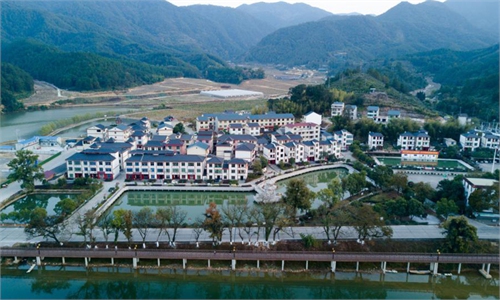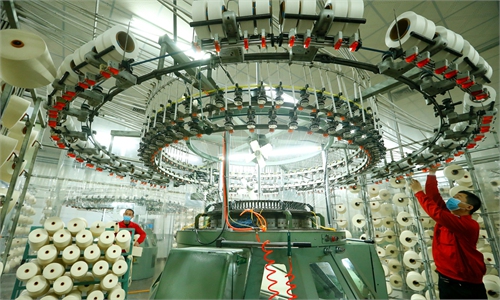China’s H1 GDP up 2.5%, Q2 positive growth in hard-won outcome as nation braves headwinds
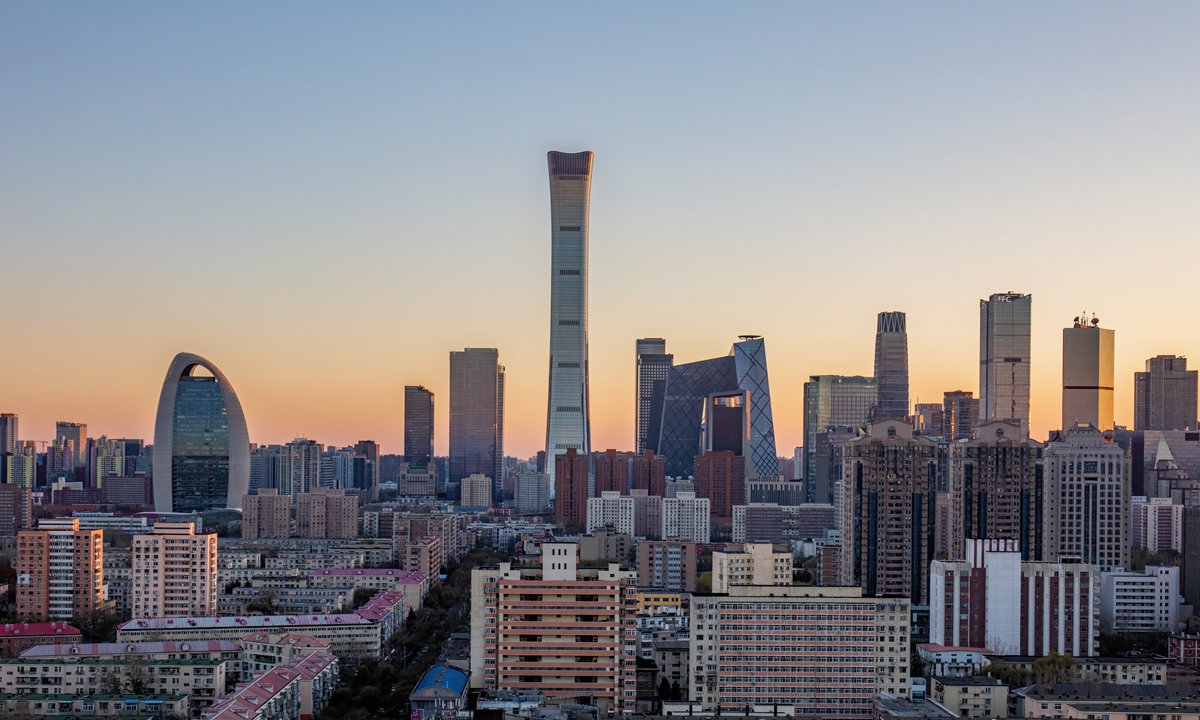
Beijing Photo: VCG
From competitive high-tech manufacturing sector to higher than expected trade growth, China's economy managed to secure a positive growth in the second quarter against tough headwinds and achieve a V-shaped rebound with 2.5 percent growth in the first half of the year, a hard-won achievement considering the country's arduous fight with the most serious outbreaks of coronavirus since 2020 and a harsh external environment, officials and experts said as they further underlined the economic resilience and abilities of the nation of 1.4 billion people to brave challenges ahead.
Although the impact of recent ordeal continues to linger in certain economic sectors, experts were generally upbeat about accelerating growth in the second half of this year as the effects of stimulus packages gradually come into force, which will provide momentum for the country's efforts to strive toward its economic growth target, they stressed. According to data released by the National Bureau of Statistics on Friday, China's GDP expanded 0.4 percent on a yearly basis in the second quarter, the slowest growth rate since the first quarter of 2020, when the domestic economy was battered by a ferocious outbreak of COVID-19 cases in Central China's Wuhan. The country's GDP growth was 4.8 percent in the first quarter.
In the first half of 2022, China's GDP expanded by 2.5 percent from a year ago, the NBS data showed.
China's economic slowdown came in the wake of Omicron outbreaks in some major metropolises including Shanghai which directly led to a shutdown of the city's activities for more than two months. The preventive measures also spilled over into surrounding areas in China's Yangtze River Delta, causing growth to slow in the region considered to be China's economic engine.
Both experts and officials said that that China has experienced challenges and uncertainties, but the first half data, which showed a recovery trend, was proof that China has withstood these tests as it navigates through a tougher than ever environment which sees the global economy mired in a series of troubles, ranging from the pandemic to the Russia-Ukraine conflict to looming economic crises in many countries around the world, including the US.
Fu Linghui, a spokesperson for the NBS, said on Friday that China's economy has overcome the negative impact of unexpected factors to show a stabilizing and improving trend. "In particular, China has achieved positive economic growth in the second quarter and stabilized the economic situation. This is a hard-won outcome to have achieved," he said.
Yao Jingyuan, a special researcher of the Counselors' Office of the State Council, said on Friday that China has experienced the test and achieved an economic rebound. "This showed that China's economic abilities are strong," he noted.
Specifically, China's economy showed stronger growth momentum, and presumably the most stable characteristics when compared with some other major world economies. The US economy, for example, is showing gloomy prospects amid problems like rising inflation, which have prompted overseas institutions to lower economic forecasts and even expressed concerns over a possible recession.
Economists from Goldman Sachs have slashed their outlook for the US' Q2 GDP to just 0.7 percent from its previous estimate of a 1.9 percent increase, CNBC reported. The Atlanta Fed's GDPNow measure also saw the US' second-quarter output contract by 2.1 percent, another CNBC report showed.
Japan's GDP growth shrank 0.9 percent in January-March from the previous quarter, as shown by revised Cabinet Office data.
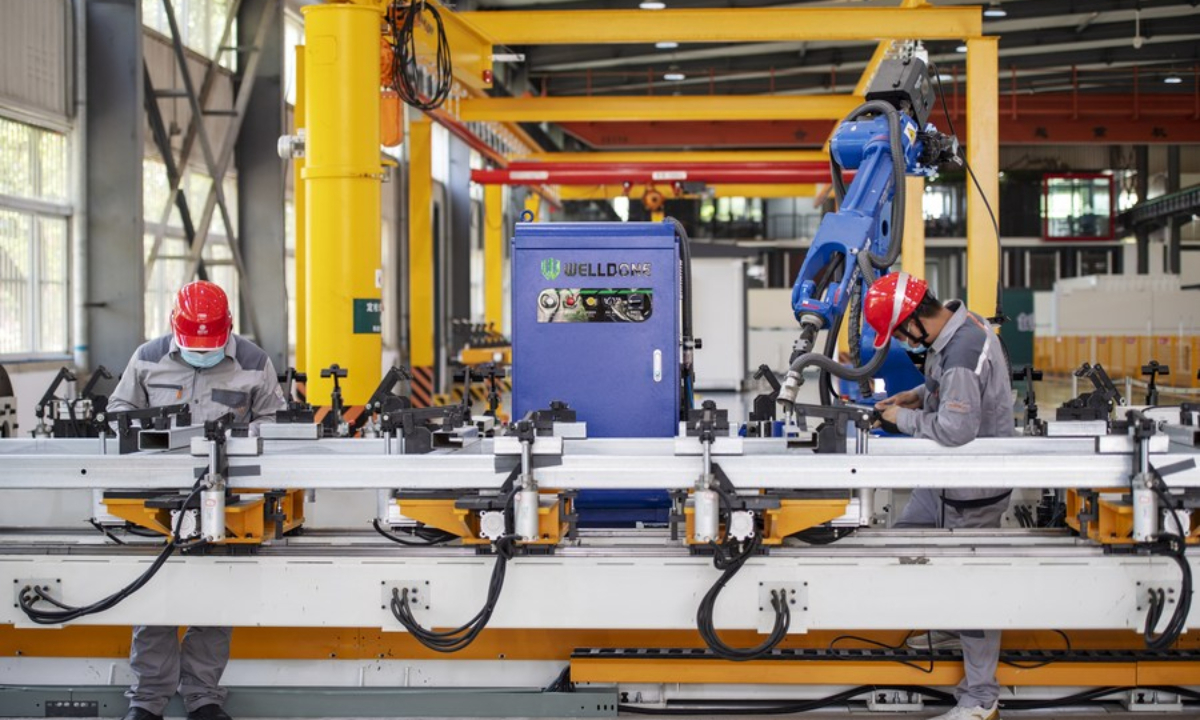
Staff members work at the workshop of the Anhui Electric Power Transmission & Transformation Co., Ltd. in Hefei, east China's Anhui Province, May 13, 2022. Photo:Xinhua
V-shaped recovery
Interpreting China's recent economic trend, economists interviewed by the Global Times on Friday all noted that China's economy presented a healthy V-shaped recovery in the second quarter, which showed that the darkest period has now passed and the domestic economy is heading for further recovery in the second half of the year.
"China's economy entered a state of stabilization and rebound in May and June after experiencing a steep fall in April. This was triggered by policy efforts to stabilize economic operations, as well as by easing of uncertain factors such as COVID-19 prevention measures and external geopolitical frictions," Liu Dian, a deputy research fellow at the Chinese Institute under Fudan University, told the Global Times on Friday.
Yao also stressed that China's economy experienced a V-shaped recovery in the first six months, as domestic GDP continued to see relatively good growth in January and February, sloped down in March, slipped abruptly in April, and saw marginal improvement in May, while major economic indicators picked up in June.
Looking closely at the Q2 economic figures, economists and organizations saw a divided situation in China's economy, with some sectors showing a trend of stabilization or even higher than expected performance, while others are still languishing after taking a severe blow from the recent woes.
In Q2, the primary industry and the secondary industry of industrial production did much of the heavy lifting for the economy. The primary industry, mostly referring to agriculture, grew 4.4 percent in added value in Q2, the NBS data showed. This sector's steady growth provides a good foundation for China's economy, including many primary products' supplies and grain safety, Liu said.
The rebound in industrial production also constituted a positive factor in China's recent economic operations. The value-added industrial output of major industrial enterprises rose 3.4 percent year-on-year in the first half of this year. It grew 3.9 percent in June, compared with 0.7 percent in May and a 2.9 percent decline in April.
In particular, the surge of high-tech manufacturing industries was a bright spot for the domestic economy amid the pressures and uncertainties. In the first half of the year, China's high-tech manufacturing added value surged 9.6 percent, outpacing the average industrial growth by 6.2 percentage points. Production of new-energy vehicles, solar batteries and mobile telecom base station equipment surged by 111.2 percent, 31.8 percent and 19.8 percent respectively, according to the NBS.
"The above-average growth speed of high-tech related industries when China's general economic situation was taking a relatively large blow shows that the sector has become a core and relatively certain momentum for economic growth," Liu said.
Cong Yi, a professor at Tianjin University of Finance and Economics, also told the Global Times on Friday that China's economic rebound in June was largely due to the fundamentals of China's economy and the stability of China's production system.
"Once we can get production back in order, an economic rebound will follow," Cong said.
Meanwhile, the trade sector also showed a brighter-than-expected growth trend. China's trade sector resumed a double-digit growth of 14.3 percent in June, compared with 9.5 percent growth in May, customs data showed on Wednesday.
The strong economic performance in the aforementioned sectors has successfully offset contradictions in other sectors such as consumption and the housing market, and managed to push China's economy to a positive growth in the second quarter despite the challenges it experienced, experts said.
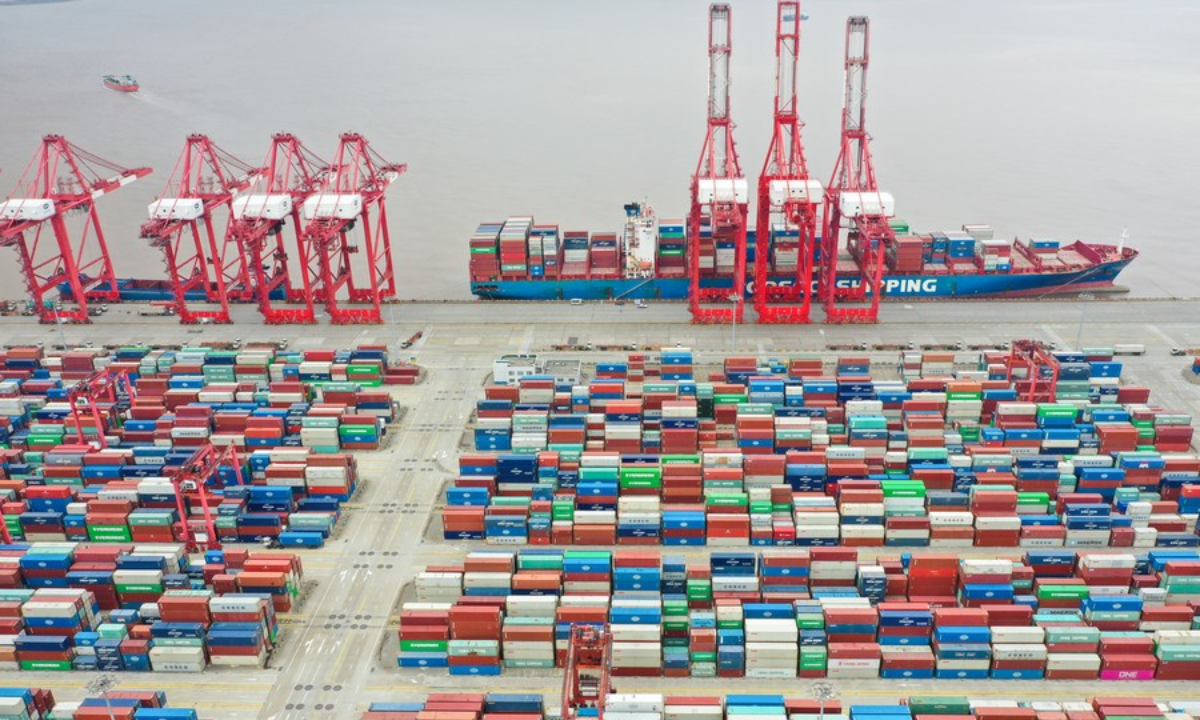
Aerial photo taken on April 15, 2022 shows a view of Shanghai's Yangshan Port in east China. Photo:Xinhua
Striving for the target
Although China's slowing GDP growth has been held up by a number of overseas media outlets as "proof" of China's weakening economic prospects, a number of economic observers still felt upbeat about China's future economic operations, as they anticipated that the effects of China's stimulus measures will become clear in the coming months.
Many of them also expressed confidence that China will still likely achieve its set GDP target, notwithstanding uncertainties, thanks to more supportive government measures and nationwide efforts.
Zhou Maohua, a macroeconomic analyst at Everbright Bank, nevertheless pointed out China will hopefully achieve whole-year GDP, employment, product price and other targets, as China's stimulus policies for consumption, investment and other areas will continuously have their intended effects in the coming months.
For example, China's increased infrastructure investment will help manufacturing industries maintain high prosperity and the property market to gradually recover. Consumption is also expected to speed up recovery as the impact from coronavirus wanes and effects of consumption stimulus policies start to have an effect.
Wei Jianguo, vice chairman of the China Center for International Economic Exchange (CCIEE) and former vice minister of commerce, told the Global Times that China's economy has a chance of leaping to its stated target.
"Foreign trade in the second half of the year will likely continue the momentum in the first half with double-digit growth expected. Meanwhile, with the recovery of investment and consumption in the second half of the year, China's economy will likely be able to achieve the annual GDP growth target of around 5.5 percent," Wei said.
However, some experts also stressed that certain economic sectors are still stuck in the doldrums, and China's GDP growth in the first half of the year shows that the government needs to roll out more rigorous policies to propel the country to its 5.5 percent growth target.
According to Liu, China's GDP needs to expand at 7 percent or 8 percent in the second half of this year in order for the country to achieve its set economic targets. This means the country needs a series of stronger than anticipated economic stimulus measures and policies to set off China's economic growth potential.
He said that one important target of China's future economic work is to pull the tertiary industry, which has taken a relatively severe blow from COVID-19, back to the normal track. Retail sales, a main gauge of consumption, dropped by 4.6 percent in Q2, narrowing the gap from a slide of 6.7 percent in May, according to data from the NBS. It reversed from the decline to grow 3.1 percent in June.
Liu also noted that China needs to create more economic growth points in the second half of the year, especially in areas like high-tech industries that already show good momentum. The country should also stick to the bottom line of preventing systemic risks to maintain a stable environment for the financial market and monetary policies, especially in areas that have shown some weakness recently such as the property market.
According to Fu, although China's economic operations face multiple difficulties and challenges, the fundamentals of China's long-term economic improvement have not changed. With the implementation of a series of policies and measures to stabilize growth, China's economy is expected to gradually recover and maintain stable growth.

